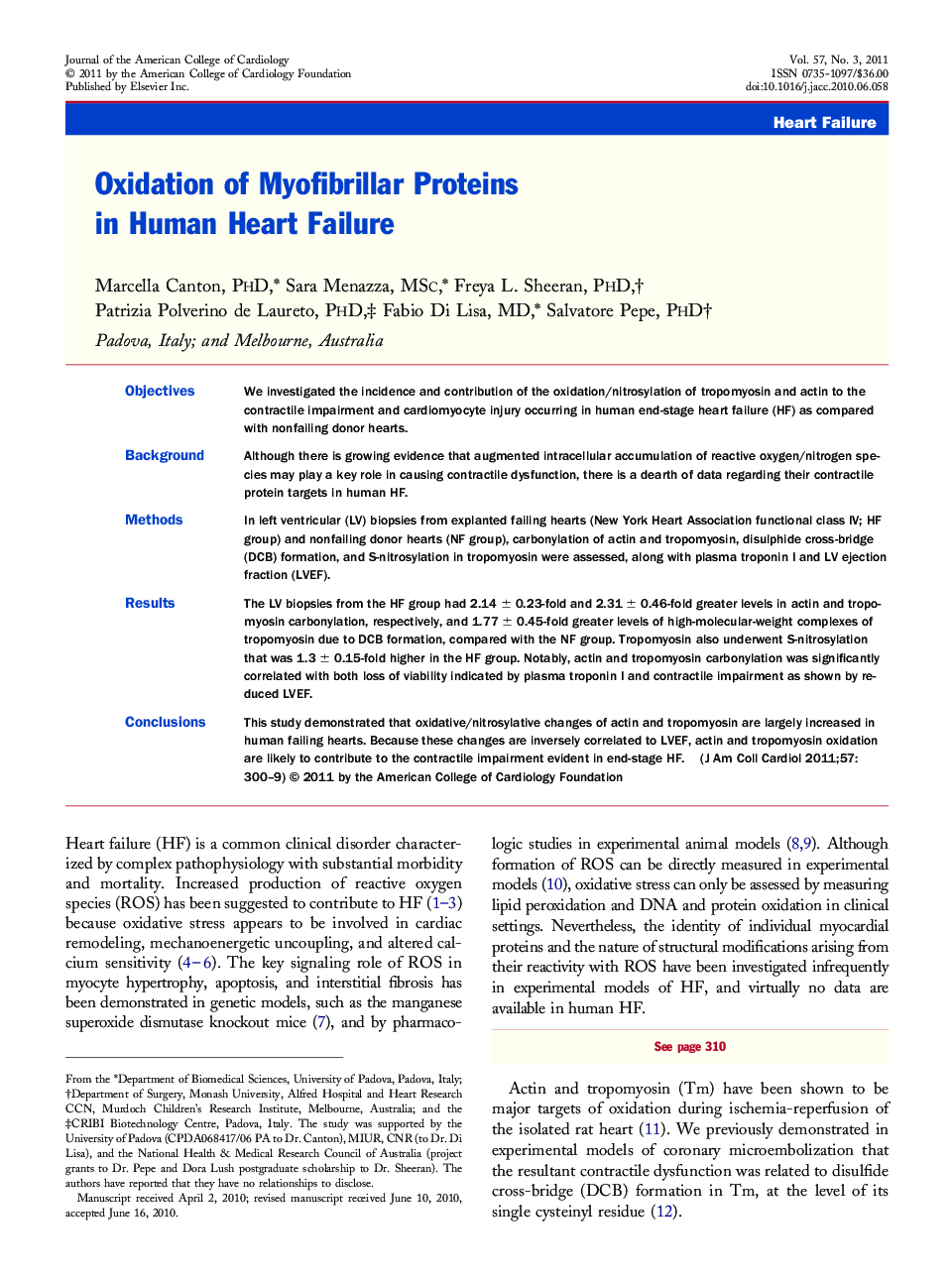| Article ID | Journal | Published Year | Pages | File Type |
|---|---|---|---|---|
| 2949818 | Journal of the American College of Cardiology | 2011 | 10 Pages |
ObjectivesWe investigated the incidence and contribution of the oxidation/nitrosylation of tropomyosin and actin to the contractile impairment and cardiomyocyte injury occurring in human end-stage heart failure (HF) as compared with nonfailing donor hearts.BackgroundAlthough there is growing evidence that augmented intracellular accumulation of reactive oxygen/nitrogen species may play a key role in causing contractile dysfunction, there is a dearth of data regarding their contractile protein targets in human HF.MethodsIn left ventricular (LV) biopsies from explanted failing hearts (New York Heart Association functional class IV; HF group) and nonfailing donor hearts (NF group), carbonylation of actin and tropomyosin, disulphide cross-bridge (DCB) formation, and S-nitrosylation in tropomyosin were assessed, along with plasma troponin I and LV ejection fraction (LVEF).ResultsThe LV biopsies from the HF group had 2.14 ± 0.23-fold and 2.31 ± 0.46-fold greater levels in actin and tropomyosin carbonylation, respectively, and 1.77 ± 0.45-fold greater levels of high-molecular-weight complexes of tropomyosin due to DCB formation, compared with the NF group. Tropomyosin also underwent S-nitrosylation that was 1.3 ± 0.15-fold higher in the HF group. Notably, actin and tropomyosin carbonylation was significantly correlated with both loss of viability indicated by plasma troponin I and contractile impairment as shown by reduced LVEF.ConclusionsThis study demonstrated that oxidative/nitrosylative changes of actin and tropomyosin are largely increased in human failing hearts. Because these changes are inversely correlated to LVEF, actin and tropomyosin oxidation are likely to contribute to the contractile impairment evident in end-stage HF.
